The first LEGO I remember playing with was a dusty shoebox full of hand-me-down bricks that were colored either white or red. There was nothing as fancy as a hinge or even a plate in the mix. It was just classic 2 x 2 and 2 x 4 bricks, along with a few scattered 2 x 10 pieces that seemed massive by comparison. These LEGO bricks really were just bricks in the most humble sense of the word. I stirred the white and red pieces with my hand, creating the churning storm-like sound of plastic against plastic for the first time.
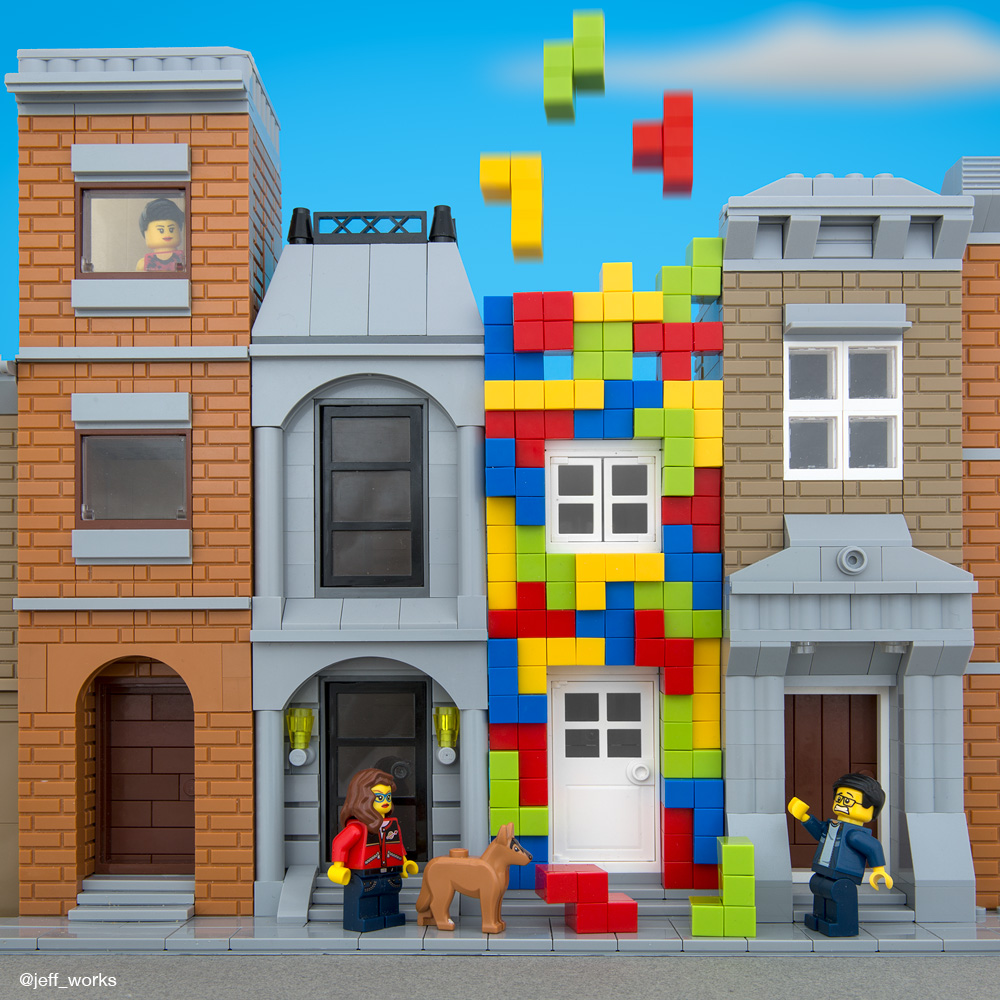
8-Bit Building
Spilling those bricks onto the floor was the Big Bang of my young creative life. The scattered pieces revealed their potential as the building blocks for new universes. I was a child, but with LEGO I was also a creator of worlds. They were small blocky worlds rendered in red and white, to be sure, but worlds I could be immersed in just as keenly as the real one. In those days I would make an airplane using 2 bricks. The sky was not the limit.
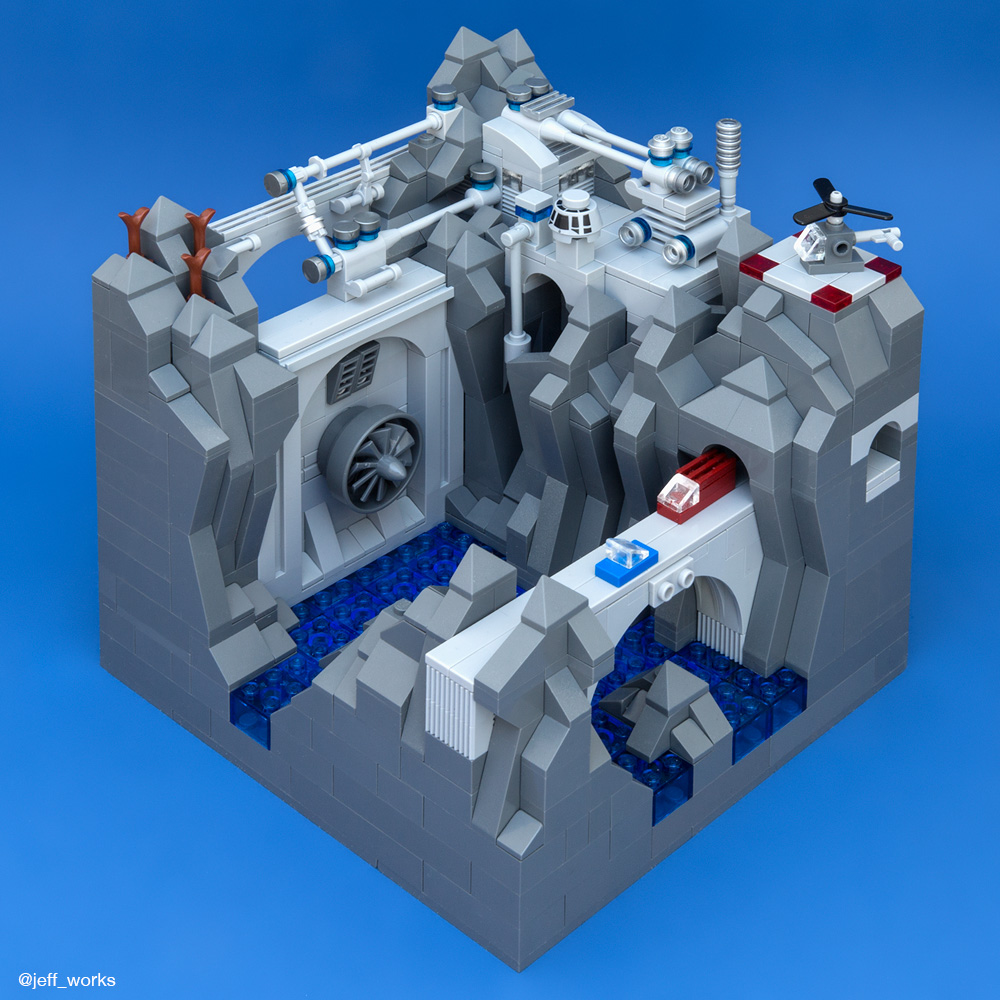
The Dam
It’s a cliché that many adults will look at children playing with LEGO and make a remark about the kids becoming architects, but for many builders—especially kids—design and construction is just the first phase of a LEGO session. After a build is complete a new set of more abstract skills comes into play: the skills needed for story crafting.
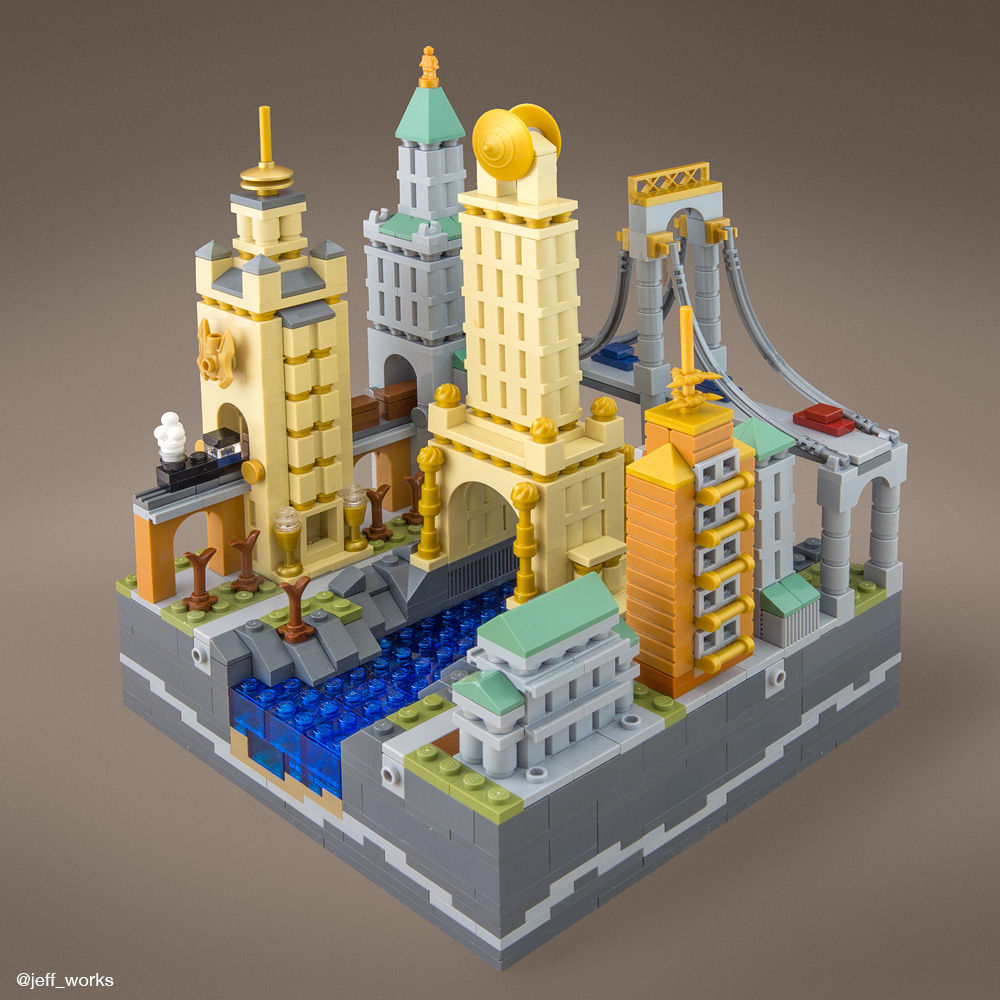
River Gate
Everyone knows that LEGO lets you build your own physical creations, but it is sometimes overlooked that LEGO lets you build your own stories as well. When the architecture of a build is complete you bring it to life by borrowing from most of the jobs involved in movie making, from casting to screenplay writing to set designing to directing to acting. Kids combine all of these abilities and know it simply as playing. One of my favorite quotes is: “A child loves his play, not because it’s easy, but because it’s hard.”
For me the play phase of a LEGO build has transformed from playing out classic space dramas with pew-pew laser sounds to professional photography of an original build. It feels like play because it’s hard but in an indefinably fun way. You know you’re playing when time disappears, and reentering the normal world is slightly jarring.
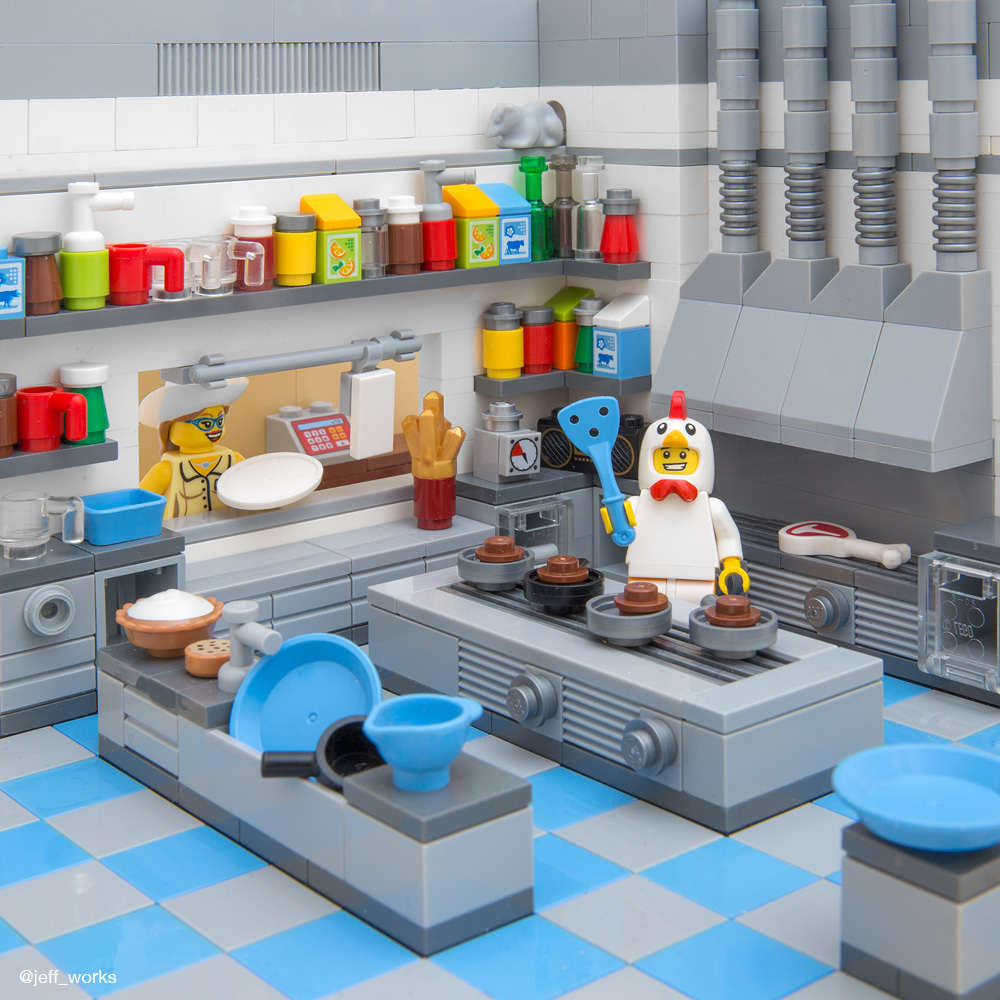
Kentucky Frying Chicken
Why photograph LEGO? That’s easy. LEGO photography lets me photograph any subject imaginable on a tabletop strewn with pieces of plastic. I can make a garden or a cityscape or a sushi restaurant, and amazingly, pieces of each find their way into the other. Sifting through LEGO bricks always reminds me of travel, but instead of new sites coming into view it’s new ideas entering the mind. There is always more to explore.
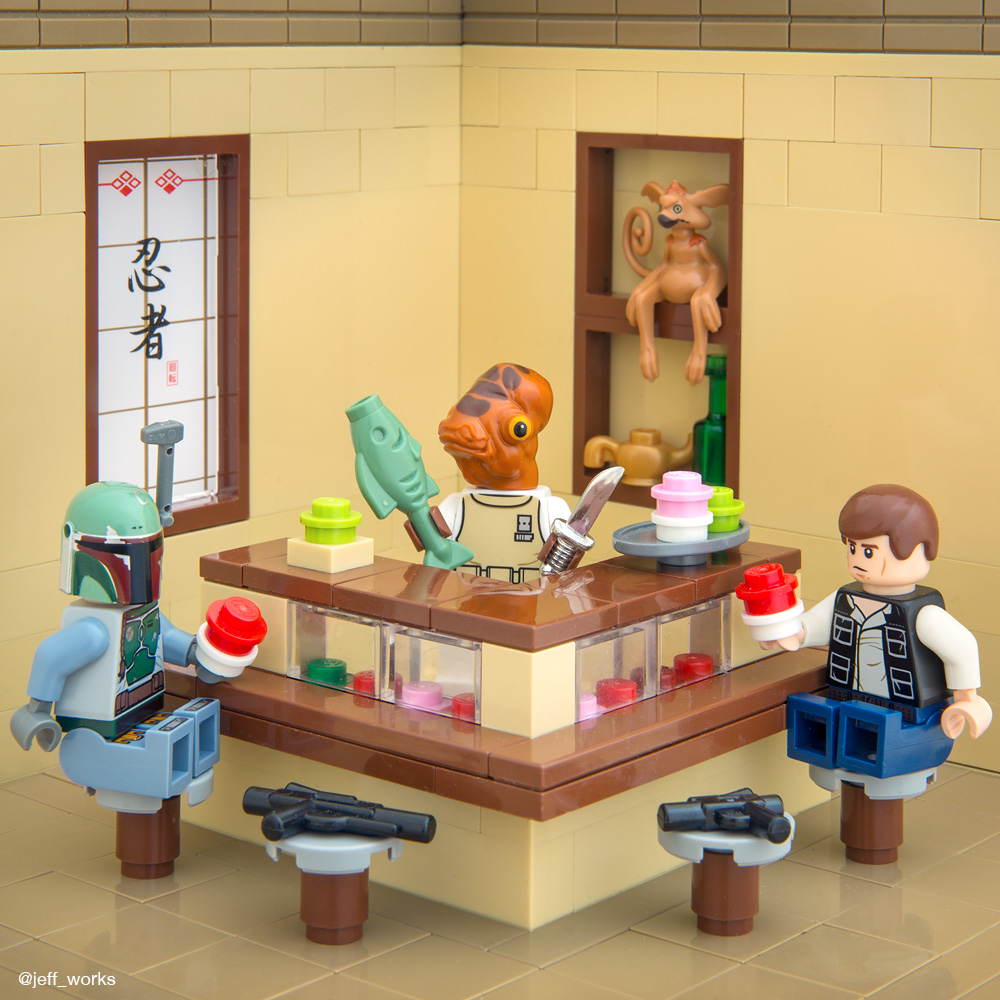
Mon Calamari Rolls
-Jeff
Jeff’s amazing LEGO photography can be found on Instagram @jeff_works. You can also check out his other work, including the wonderful “Ghost Train Crossing Canada” and the incredible “Diorama” photographs at http://www.jeff-friesen.com/
If you enjoy posts like this, we invite you to join our G+ community.
Don’t forget to subscribe to the blog to get notified when we have a new post ready for you.





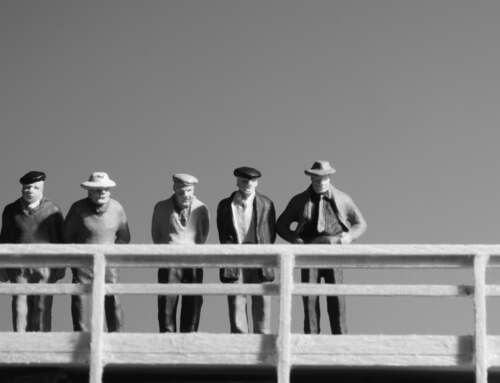
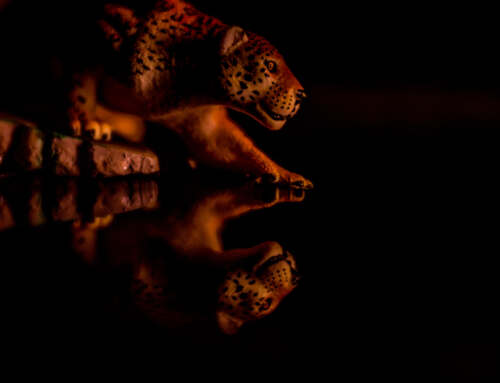
These are absolutely amazing Jeff. And you’ve described your why so eloquently.
Jeff thank you for sharing your thoughts on LEGO, play and stories with us. Your words really resonate with me, especially the part about play being hard. It is hard, but oh so much fun!!
I want to tell you that your Ghost Train series is brilliant. Every photo a breathtaking love letter to both Canada and the joy of train travel. My hat is off to you good sir!
Again, thanks for this Jeff. It’s a brilliant read. Your memories of ‘two brick airplanes’ rekindled mine and brought a smile to my face.
As Shelly mentioned, your Ghost Train Crossing Canada series leaves me breathless! As do your Wild and Dinosaur Diorama shots. Although the latter leave me gasping for breath through laughter!
Thanks.
Thanks for your kind comments! I’m glad you like the LEGO builds.
Brilliant work, I love all the images and your “why”. I especially love your architectural works. The mini-train is so cute and the detail you achieve out of seemingly simple blocks is very cool.
Wow Jeff! Finally getting around to reading this and I love your “Why” so much!! Aside from your photos being super clean and top-notch, your builds are incredible. I really love the details and aesthetic of “Kentucky Frying Chicken”. Looking forward to more of your work.
Jeff, I love your creations! They are an inspiration. I especially love your miniature cities! But that Tetris one is such a great mix of colour, fun, cheeky… I want to build one for my LEGO City now! Great inspiration, thanks!